Abstract
The development of methods for the assessment of the thermal environment is traced, and the reasons for the devising of special indices of thermal stress are discussed. The more important of the indices are described, and it is shown that they conform to a restricted number of types. The general trend in their evolution is indicated and some guidance is given in their use.
Full text
PDF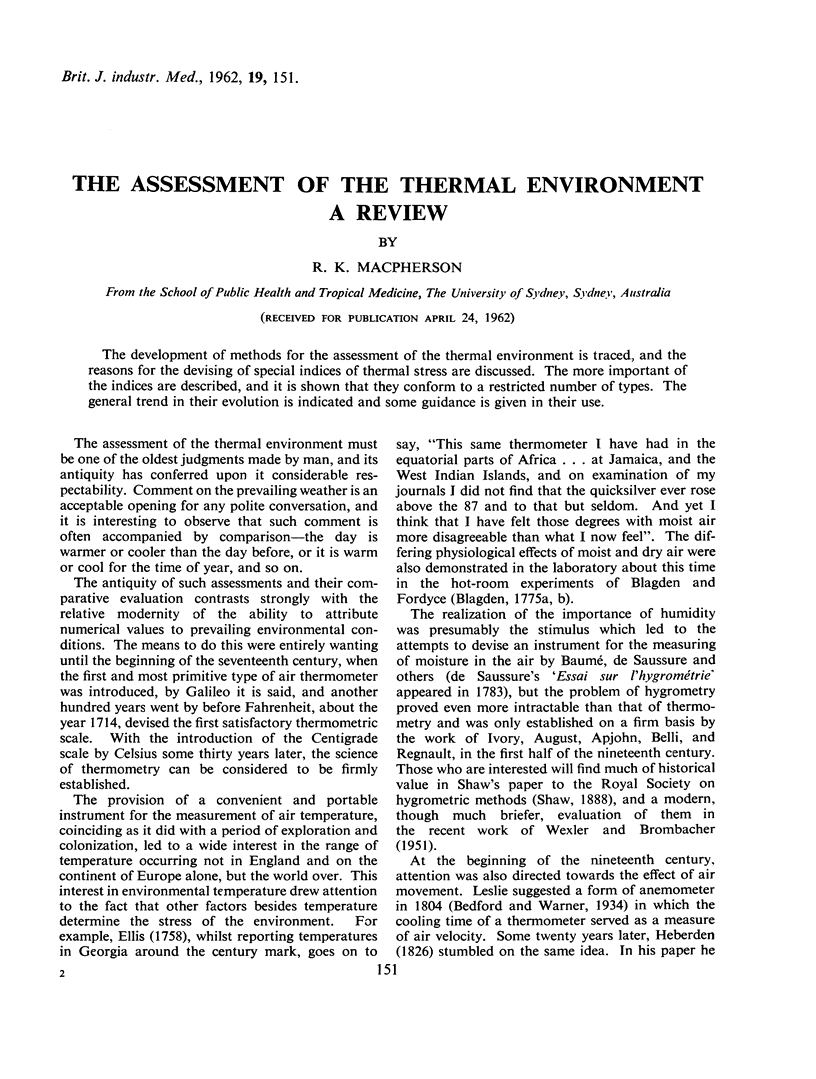
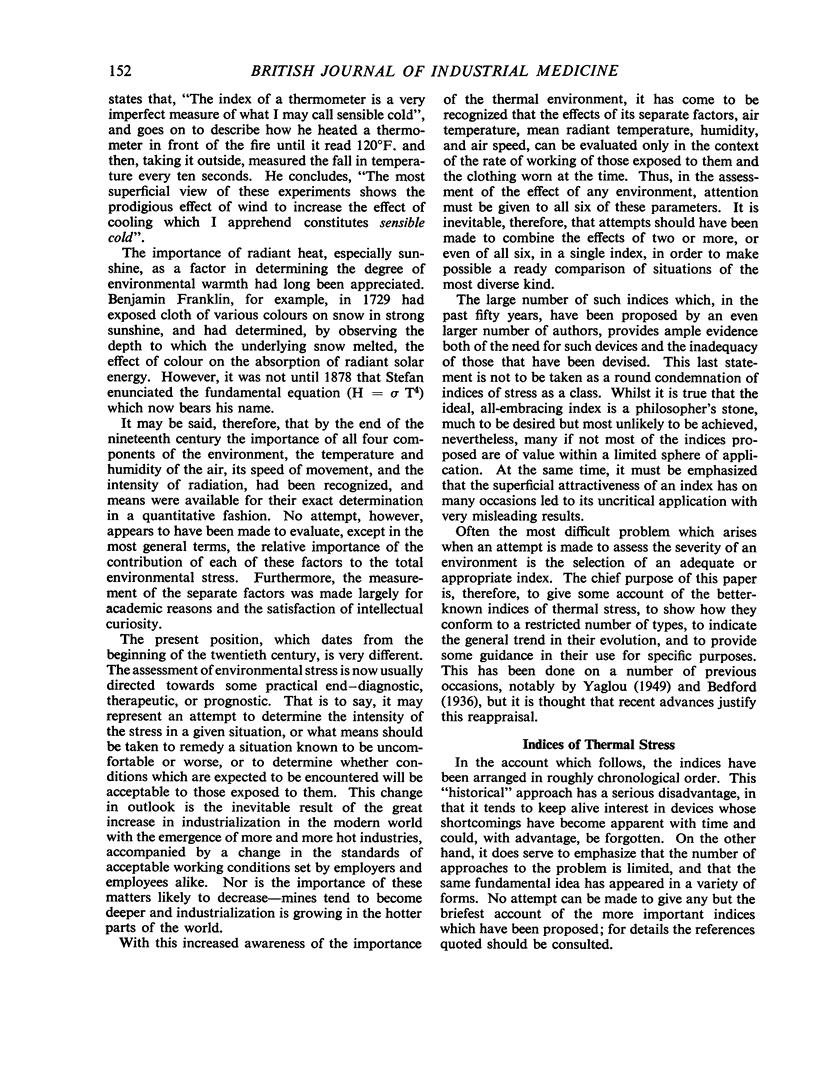
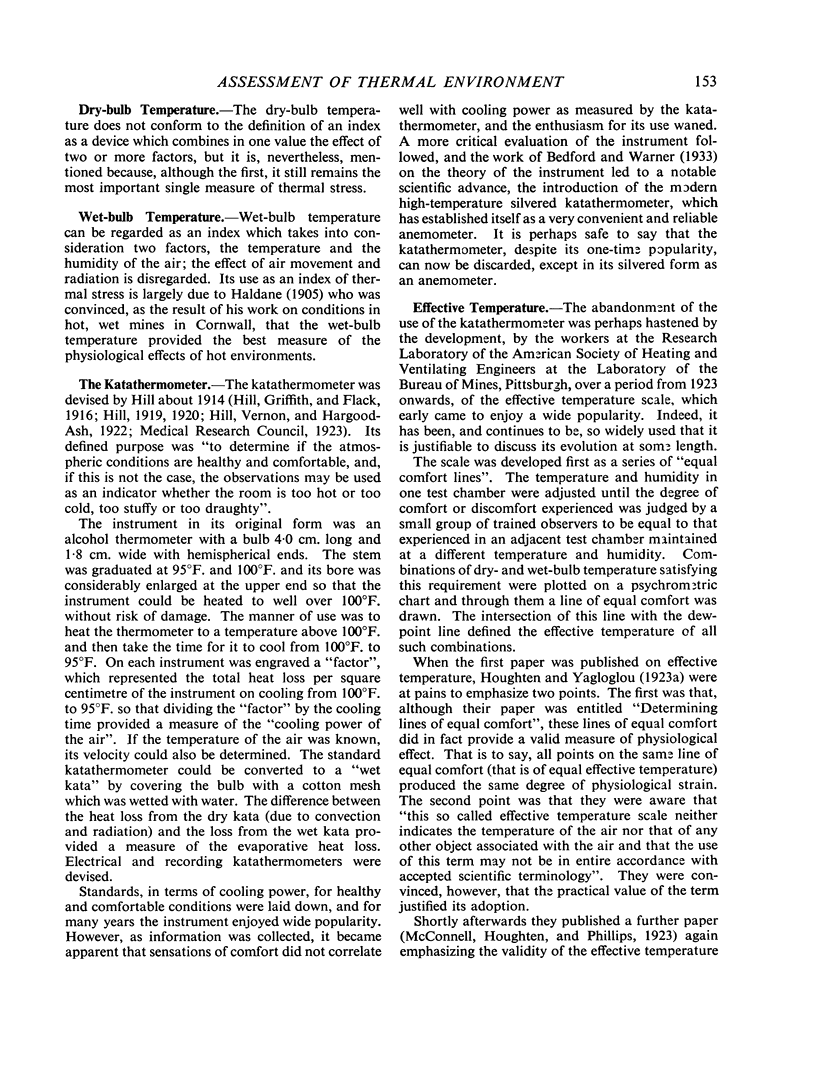
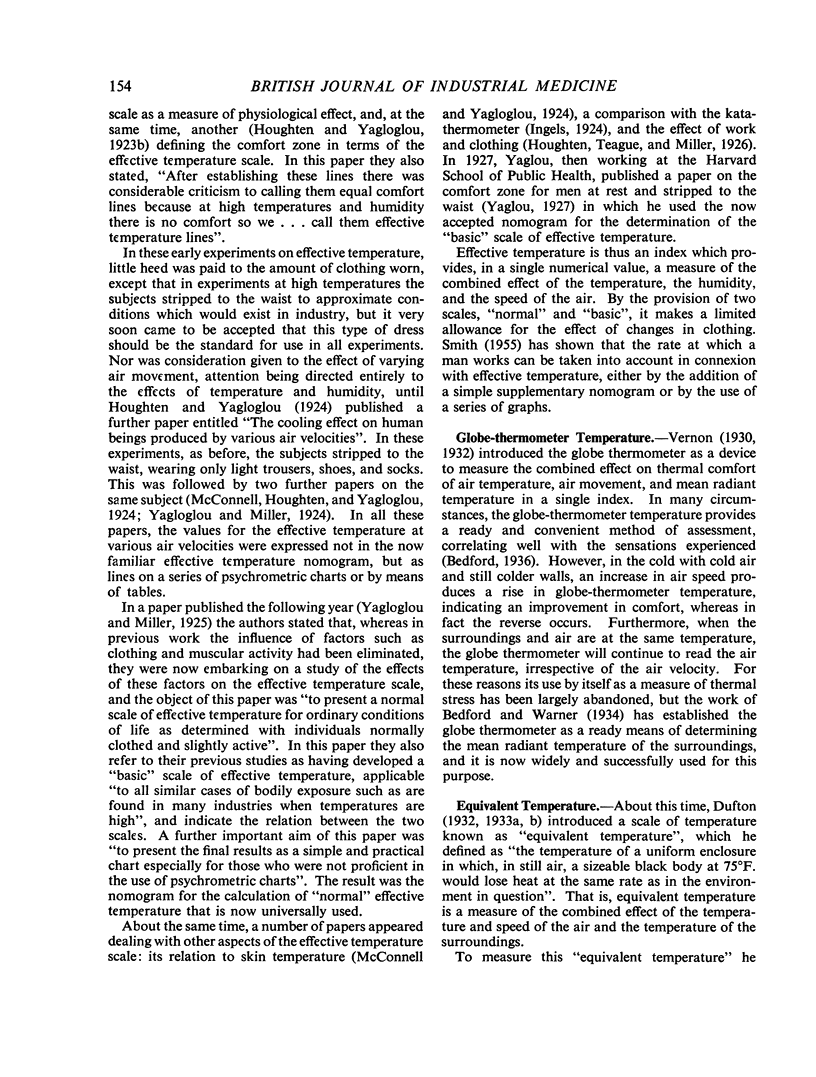
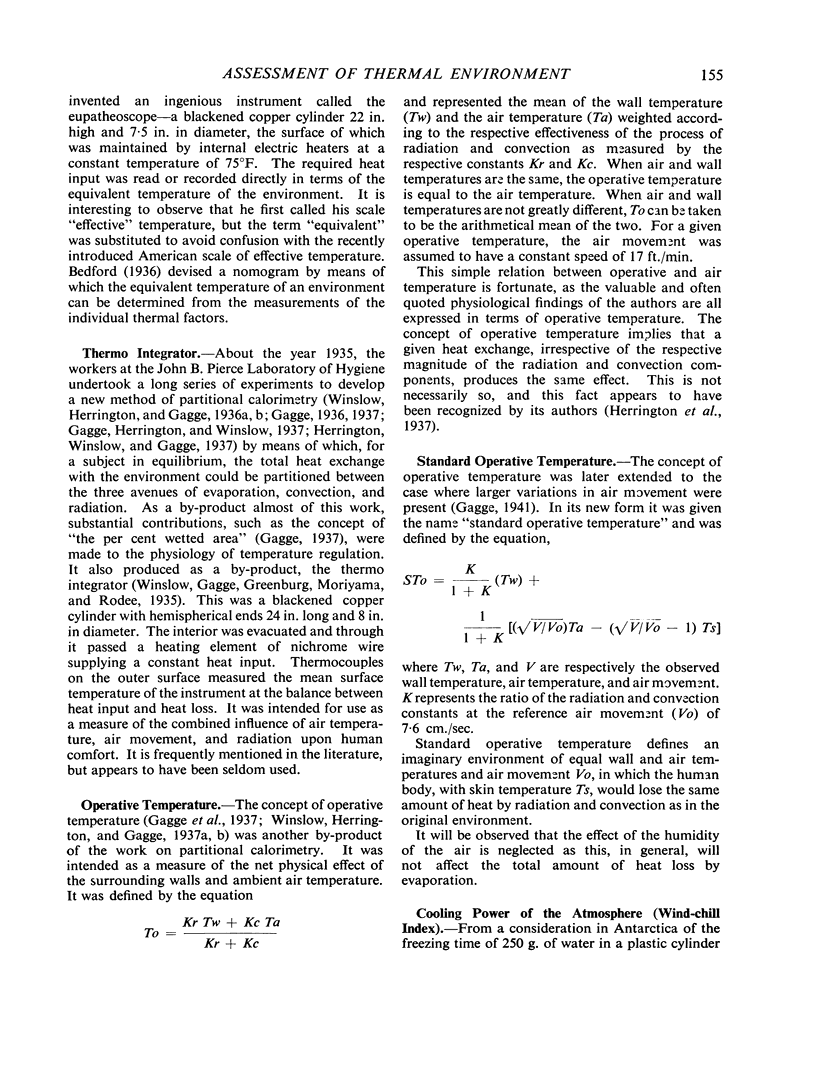
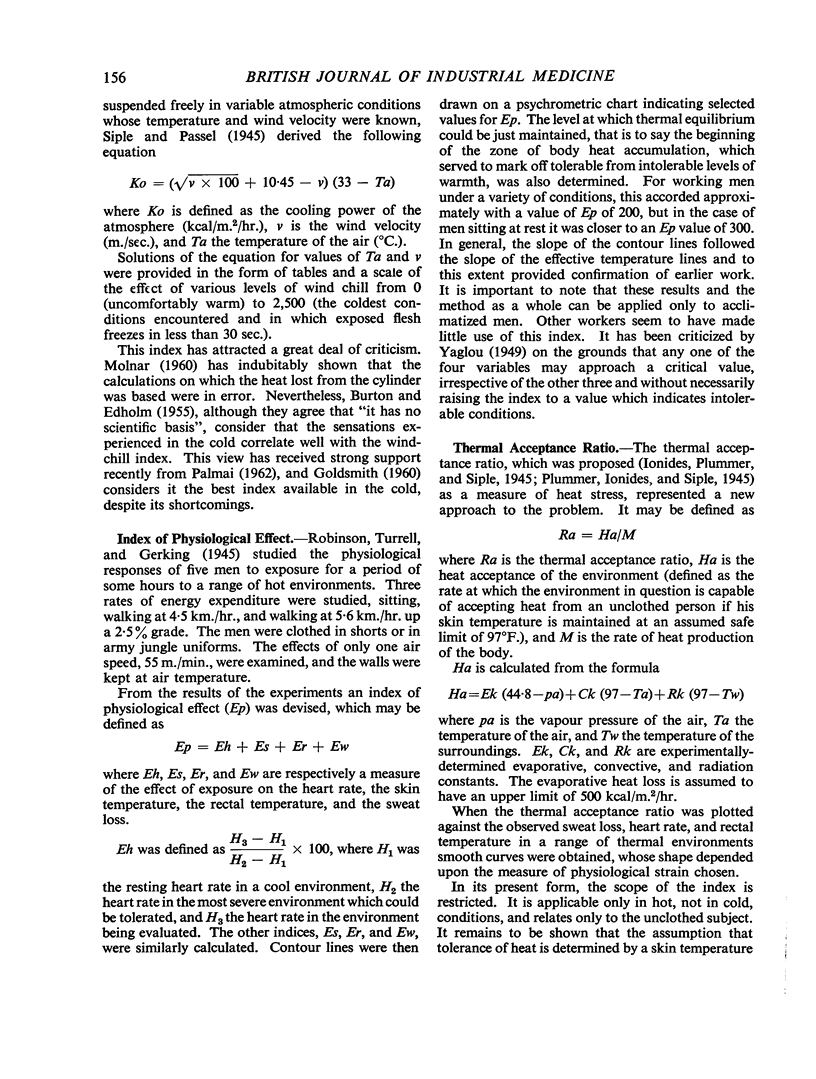
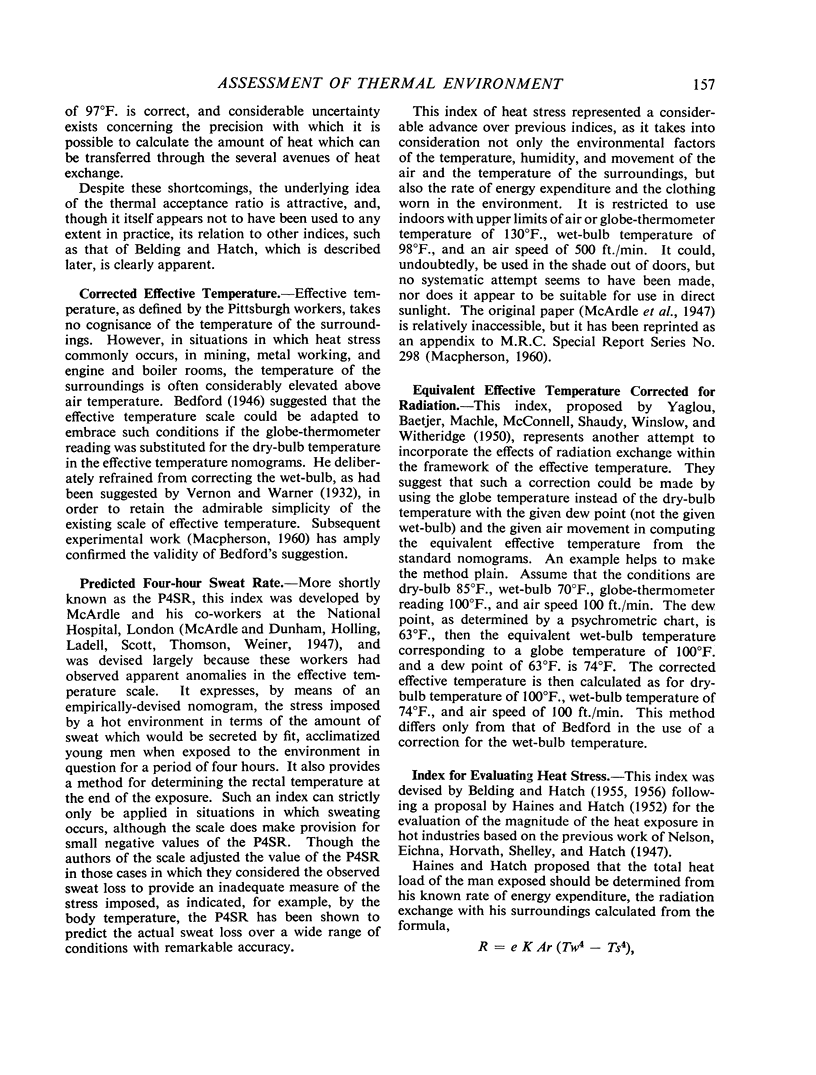
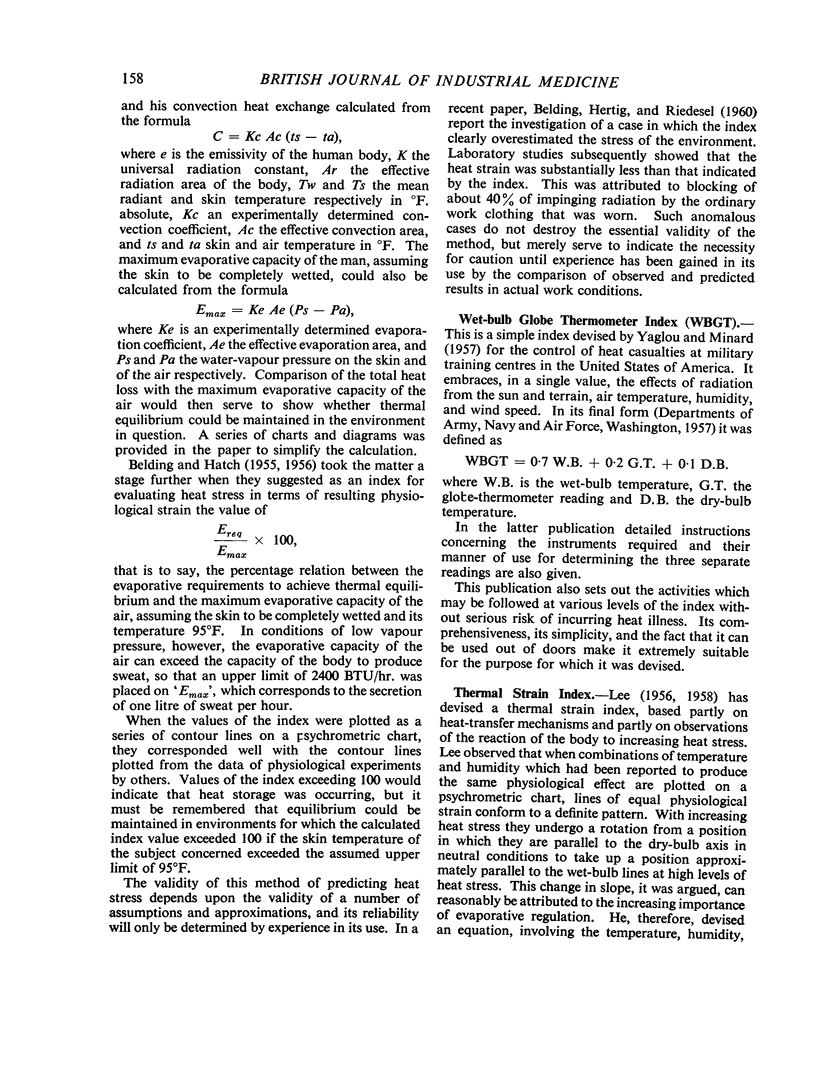
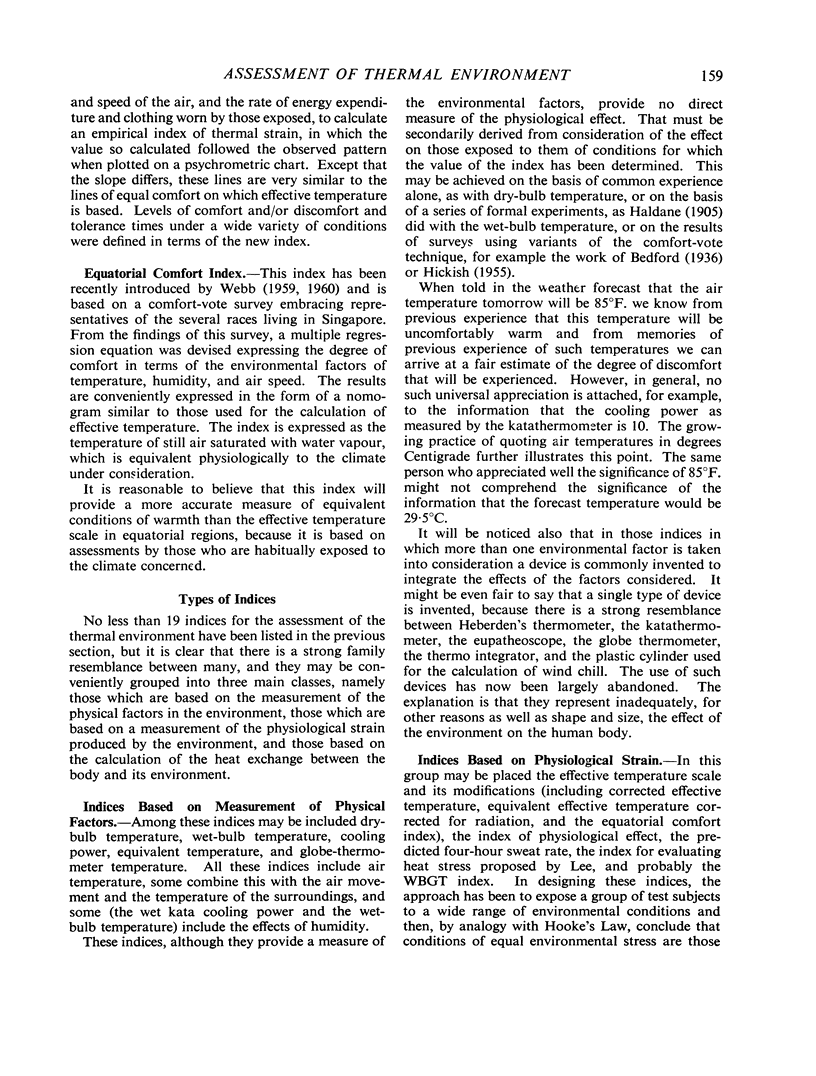
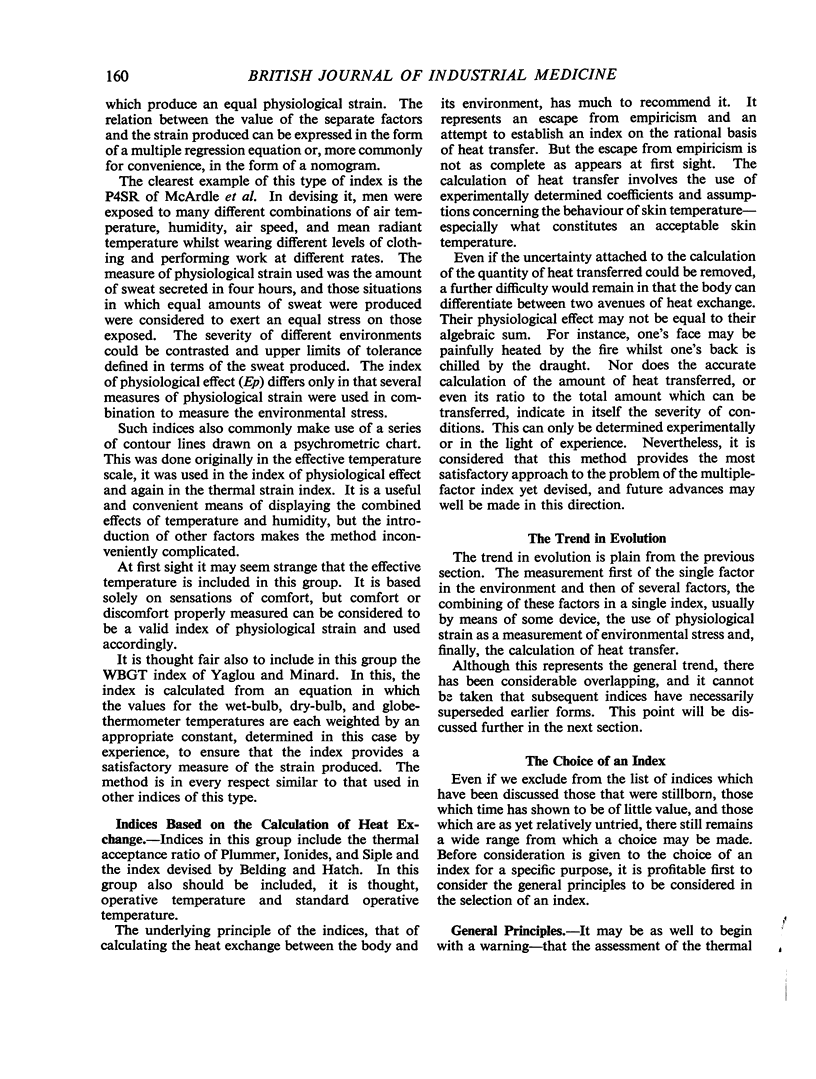
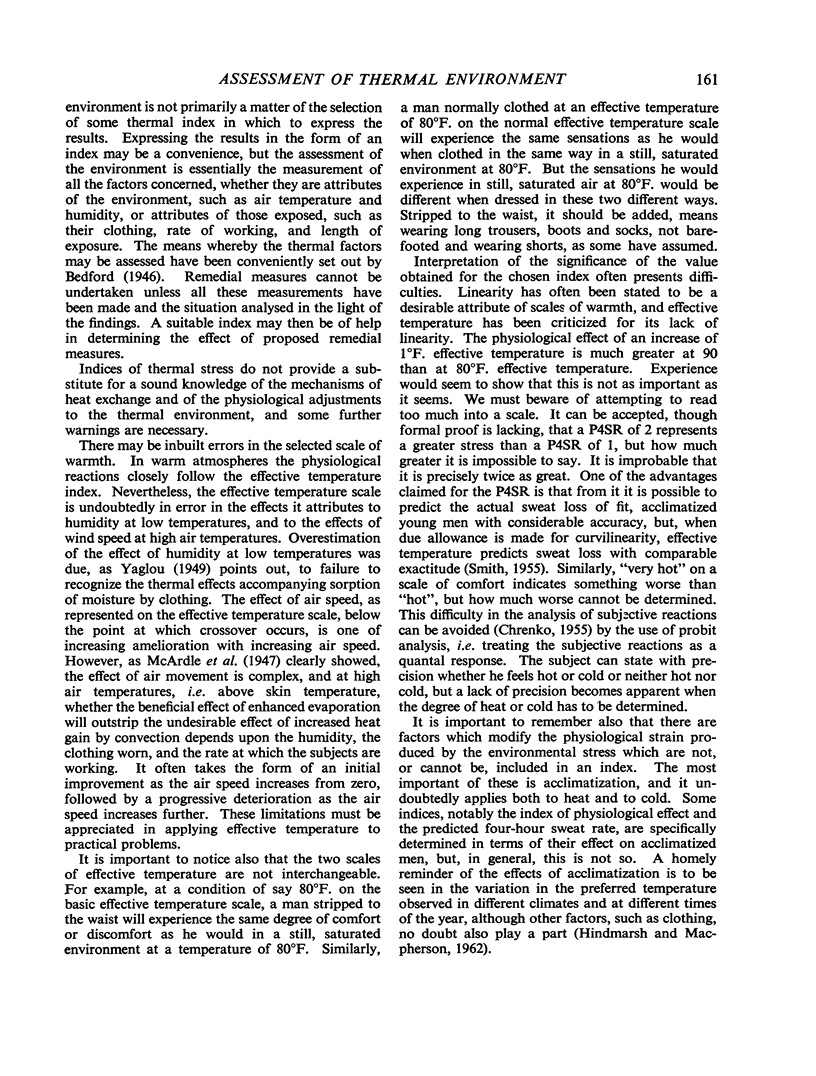
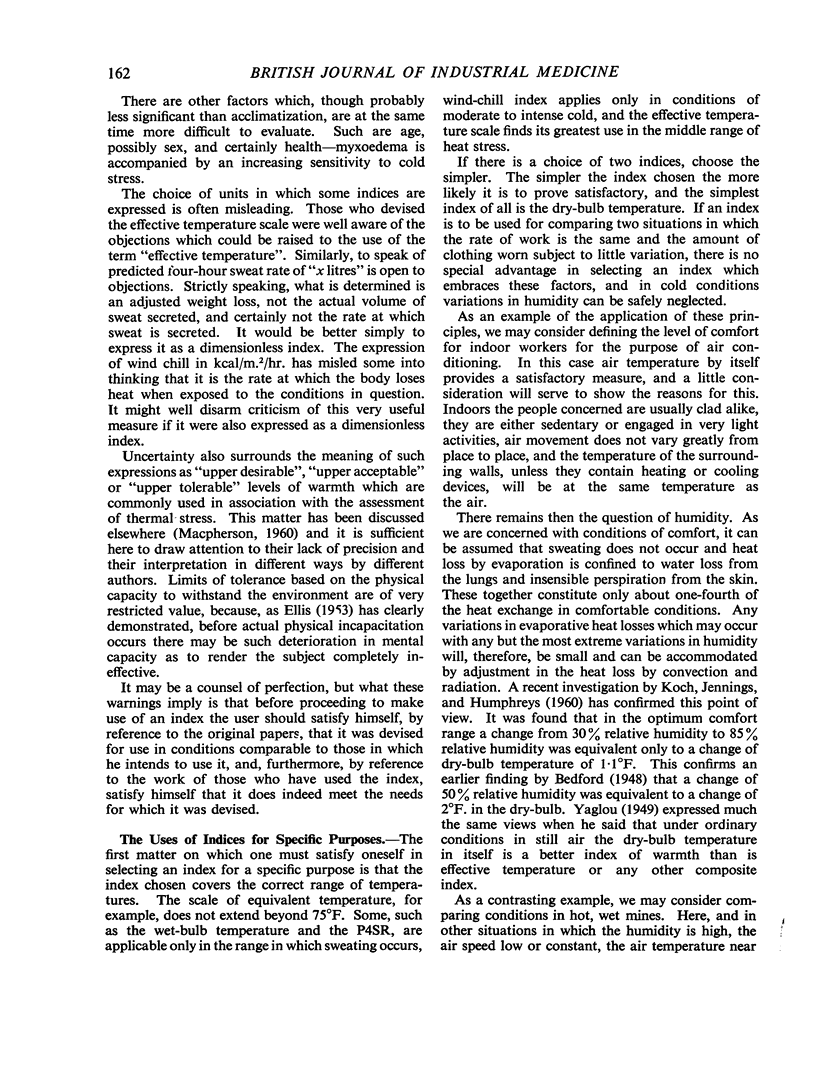
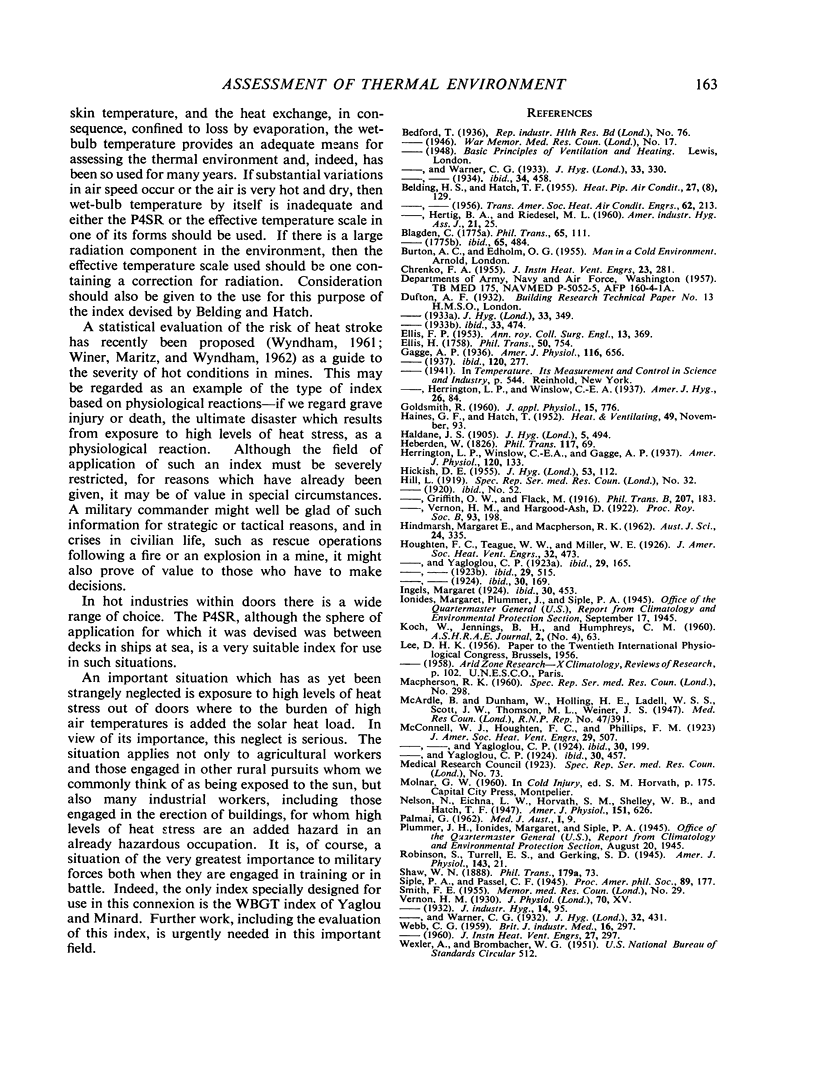
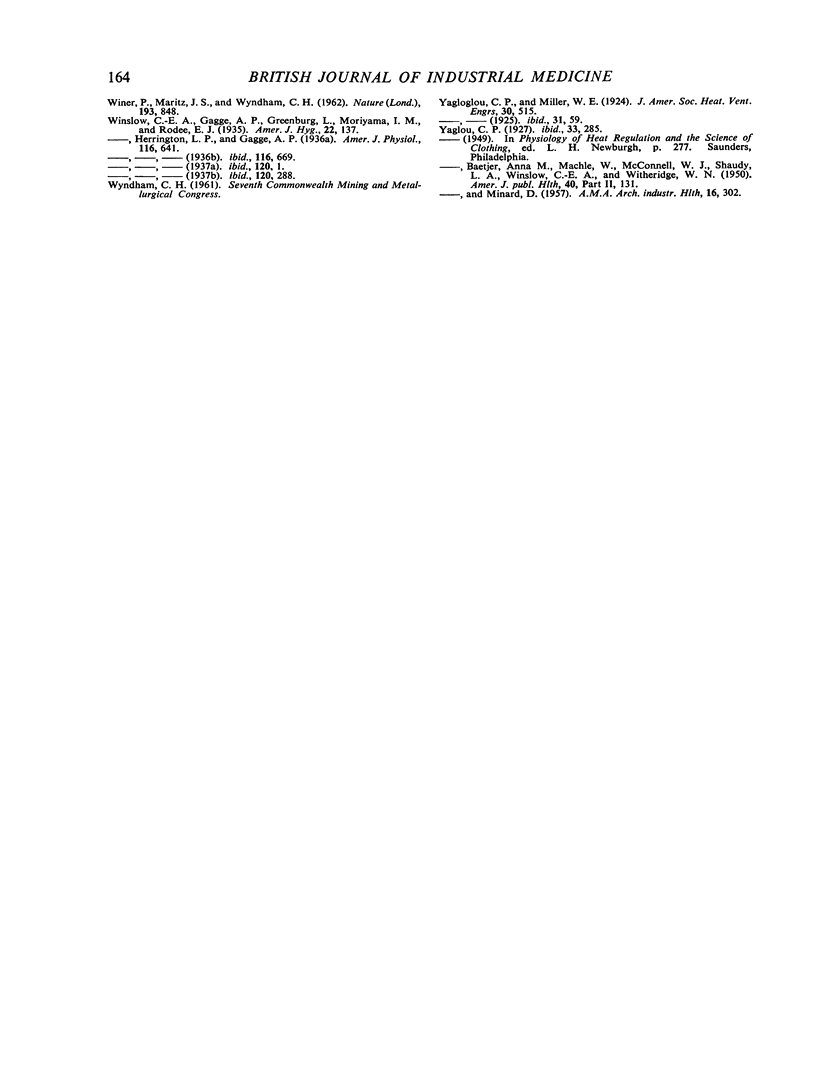
Selected References
These references are in PubMed. This may not be the complete list of references from this article.
- ELLIS F. P. Tolerable and desirable levels of warmth in warm climates, with special reference to the requirements of men in the Royal Navy. Ann R Coll Surg Engl. 1953 Dec;13(6):369–391. [PMC free article] [PubMed] [Google Scholar]
- GOLDSMITH R. Use of clothing records to demonstrate acclimatization to cold in man. J Appl Physiol. 1960 Sep;15:776–780. doi: 10.1152/jappl.1960.15.5.776. [DOI] [PubMed] [Google Scholar]
- HICKISH D. E. Thermal sensations of workers in light industry in summer; a field study in southern England. J Hyg (Lond) 1955 Mar;53(1):112–123. doi: 10.1017/s0022172400000565. [DOI] [PMC free article] [PubMed] [Google Scholar]
- PALMAI G. Thermal comfort and acclimatization to cold in a subantarctic environment. Med J Aust. 1962 Jan 6;49(1):9–12. doi: 10.5694/j.1326-5377.1962.tb89002.x. [DOI] [PubMed] [Google Scholar]
- WINER P., MARITZ J. S., WYNDHAM C. H. Estimation of risks of heat-stroke. Nature. 1962 Mar 3;193:848–849. doi: 10.1038/193848a0. [DOI] [PubMed] [Google Scholar]


